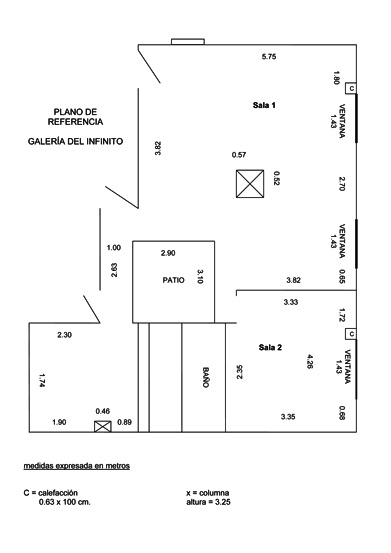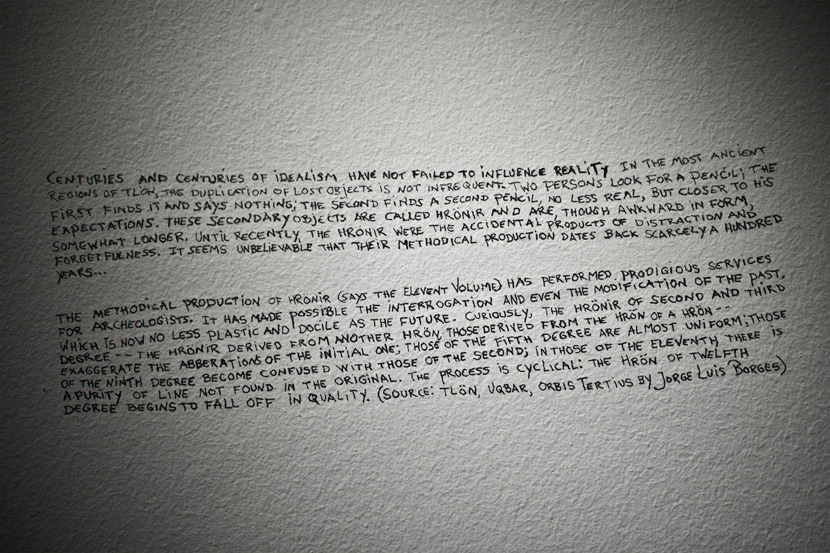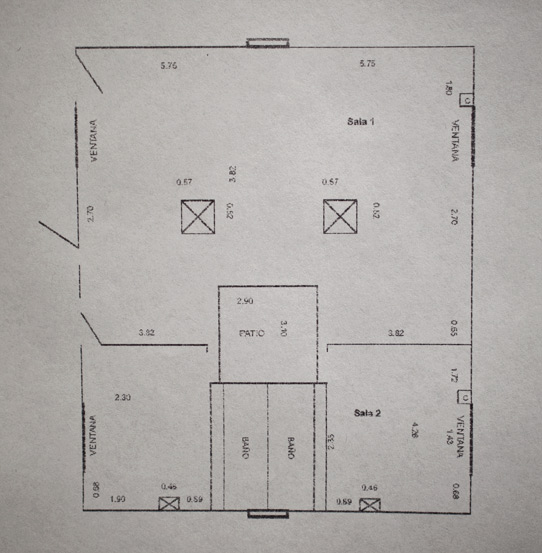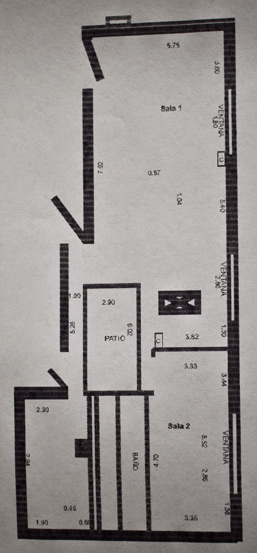2012 _ 013 Urban Songline (A Hrönir Songline) Latitude: -34.58966° S – -34.58969° S / Longitude: -58.38820° W – -58.38785° W – Galeria Del Infinito Arte, Buenos Aires, Argentina
The original floor plan of the (gallery) space redesigned as a hrönir of a 2nd, 3rd, 5th, 9th, 11th and 12th degree as described in Jorge Luis Borges in Tlön, Uqbar, Orbis Tertius by a local graphic designer and subsequently transformed into sound by matrix printer and music by software.
‘I am still a great fan of Borges to whom I dedicated an Urban Songline when I was working in Buenos Aires, transforming the exhibition space through the rules described in his story Tlön, Uqbar and Orbis Tertius in which reality is enriched by the production of historical artifacts by finding the same lost objects by different people, hence creating a form of archeological production. The story describes these new newly created objects ‘Hrönir’ and its iterations, Hrönirs of Hrönirs up to the 12th degree. By having a local designer re-draw the exhibition space based on these rules of transformation (as all Hrönirs show a deformation (some shorter, some thicker, etc.)) and having them reproduced by matrix-printer I created a score, a sound-track for the room based on this Magic-realist script’.
__________________________________________________
Part of the project Urban Songlines, a utopian/dystopian series of collaborative translations of buildings, urban structures and public spaces into music through site-specific sound-generation. These performances are a way of connecting to places by listening to them as well as a research into how we use and experience the public domain and to what degree we can claim ownership over it, discussing notions of inclusion, becoming and belonging.
__________________________________________________
Centuries and centuries of idealism have not failed to influence reality. In the most ancient regions of Tlön, the duplication of lost objects is not infrequent. Two persons look for a pencil; the first finds it and says nothing; the second finds a second pencil, no less real, but closer to his expectations. These secondary objects are called hrönir and are, though awkward in form, somewhat longer. Until recently, the hrönir were the accidental products of distraction and forgetfulness. It seems unbelievable that their methodical production dates back scarcely a hundred years…
The methodical fabrication of hrönir (says the Eleventh Volume) has performed prodigious services for archaeologists. It has made possible the interrogation and even the modification of the past, which is now no less plastic and docile than the future. Curiously, the hrönir of second and third degree — the hrönir derived from another hrön, those derived from the hrön of a hrön — exaggerate the aberrations of the initial one; those of fifth degree are almost uniform; those of ninth degree become confused with those of the second; in those of the eleventh there is a purity of line not found in the original. The process is cyclical: the hrön of twelfth degree begins to fall off in quality. (Source: Tlön, Uqbar, Orbis Tertius by Jorge Luis Borges)
The gallery space translated into music by the rules of Jorge Luis Borges’ story of Tlön, Uqbar, Orbis Tertius where history is manipulated and parallel presents are created through the use of production of Hrönir. Here the gallery space is described as a sequence of transformations (hrönir of 2nd, 3rd, 5th, 9th, 11th and 12th degree). Windows shift, pillars get duplicated, walls are fortified or bent into curves.
The matrix printer materializing the plans provides for the sound profile that is subsequently turned into music by software. The interpretation of Borges’ rules into new floor plans is done by Nuné Molina, a local designer, adding a dimension to the seven decades old portrait of the environment in which this event takes place; Buenos Aires.
__________________________________________________
Matrix printer, prints // dimensions variable.
013 Urban Songline is made possible with generous support from the Mondriaan Fund








